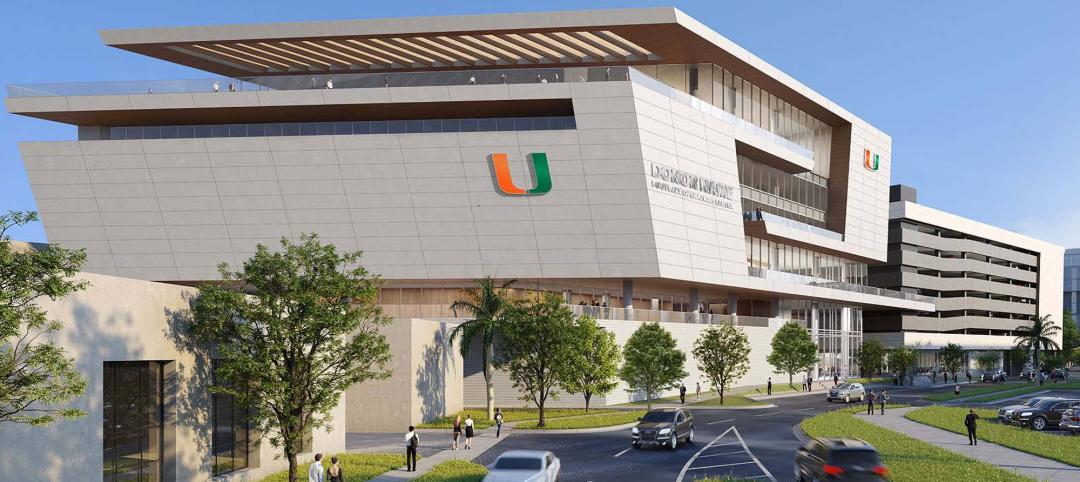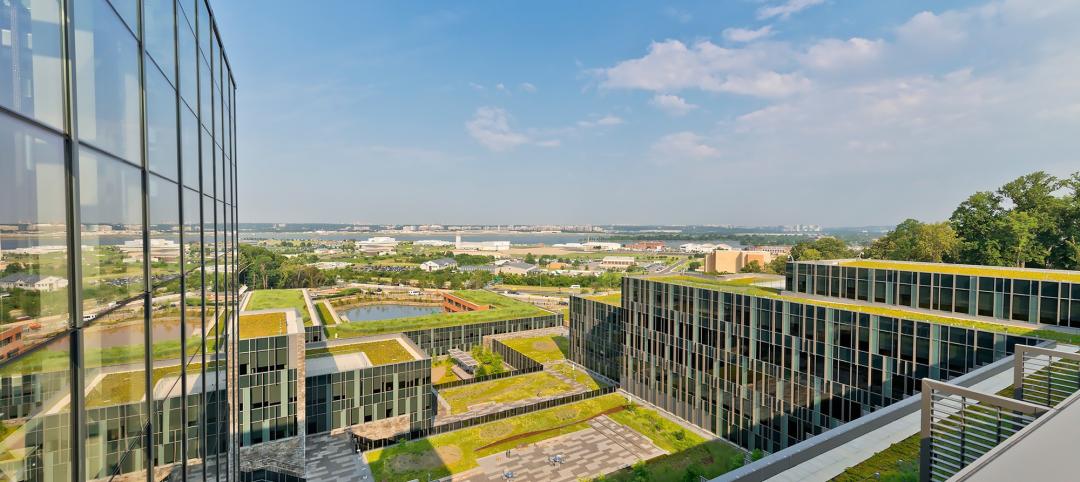A 2021 University of Utah Health study reported that more than half of all doctors, nurses and emergency responders treating COVID-19 patients were vulnerable to mental health issues ranging from depression and insomnia to anxiety and substance abuse. The risk was comparable to rates observed in healthcare workers following natural disasters and terrorist attacks.
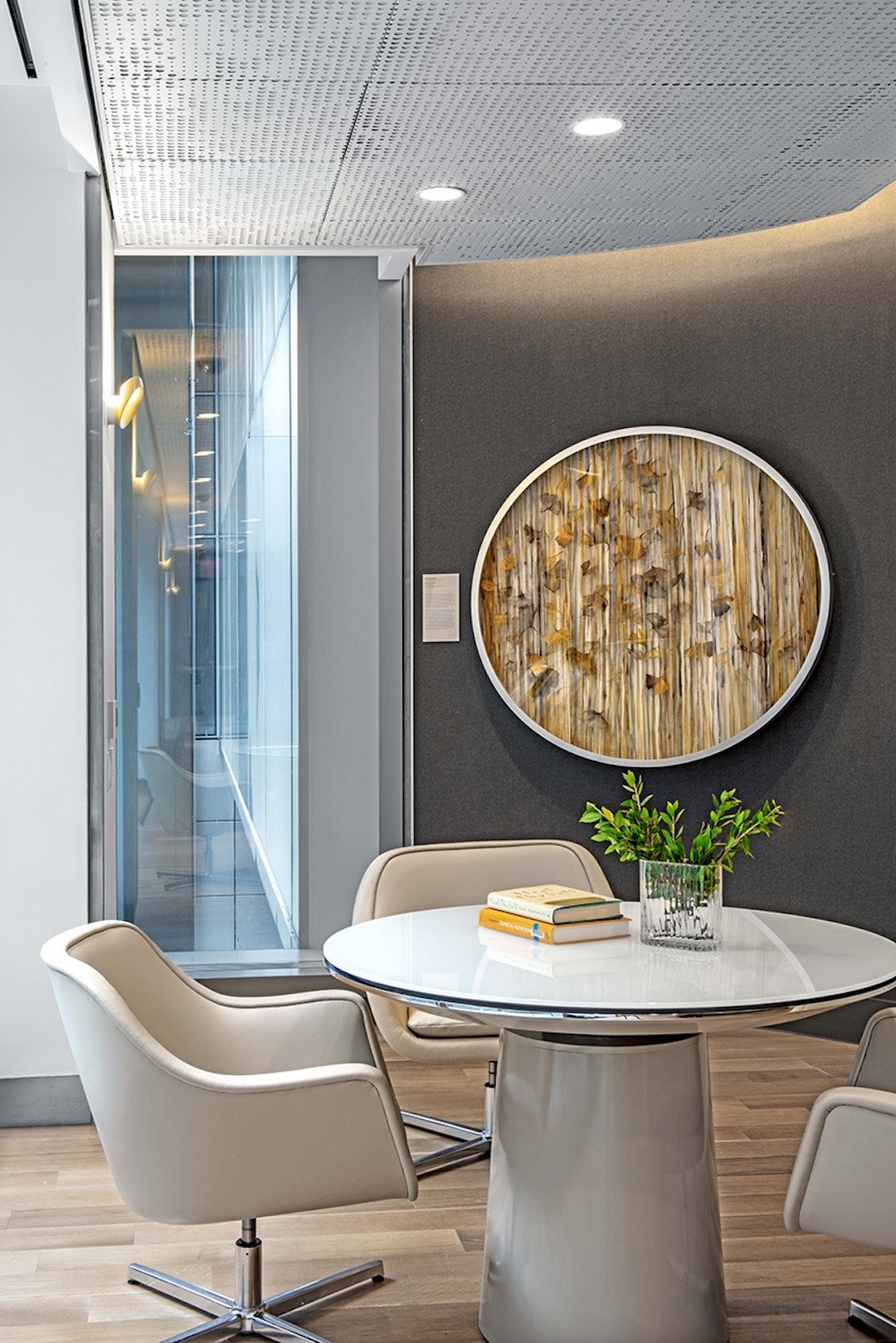
Designers can help health systems and healthcare organizations take a holistic approach to designing restorative spaces for their people. The best approach is to think about every aspect of a hospital building as an opportunity to boost staff health and wellness.
Frontline healthcare workers will, by nature, always will put patient welfare in front of their own. During the height of the pandemic, though, they had even less time than ever to take care of themselves. But even a few simple wellness-infused design strategies can give frazzled, time-crunched healthcare workers a few moments of respite.
Natural Connections
By now we’re all well-versed in the healing power of nature for patients. We need to remember that biophilic design elements also can offer mental health benefits for staff. Experiencing plants, water, breezes, natural patterns and nature-based images—even for short periods of time—can help healthcare workers relax and refocus. In addition to patient rooms, biophilic elements can be incorporated into high-traffic areas like hallways and nurses’ stations.
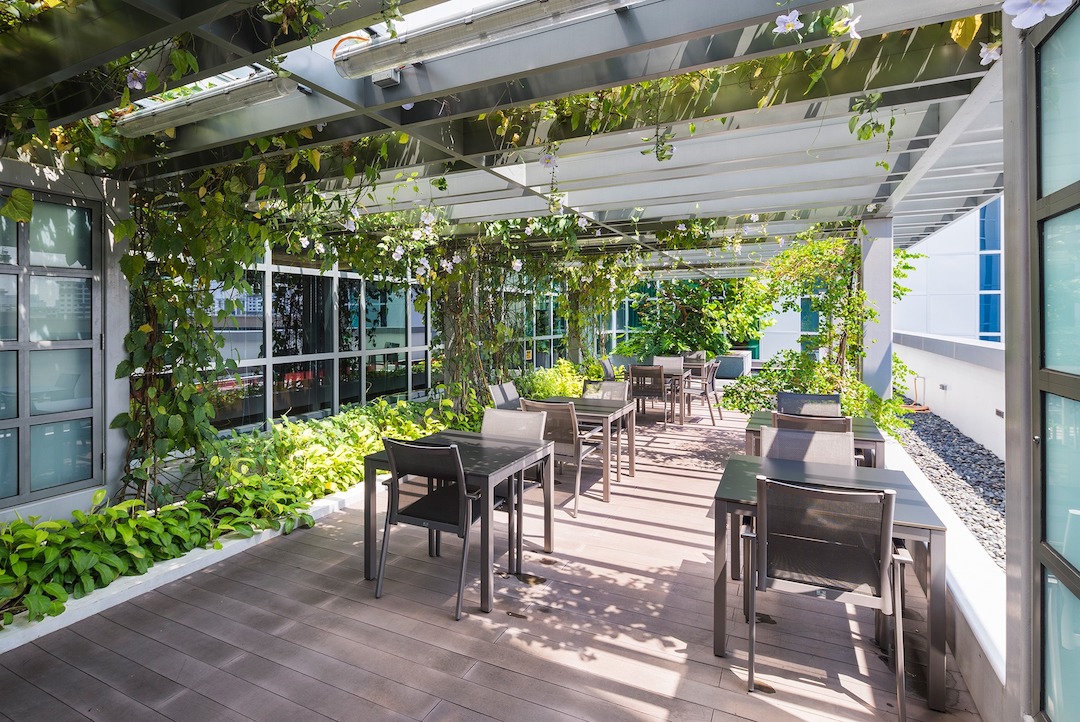
We all have an innate desire to experience direct connections with nature. Providing outdoor spaces where staff can soak up some sun, breathe in the fresh air and just “be” brings well-documented wellness benefits.
Shining Light
Light affects people’s circadian rhythms, which impacts our sleep patterns and immune systems. Even in the best circumstances, most healthcare workers don’t get the amount and type of light required to fully stimulate their circadian rhythms.
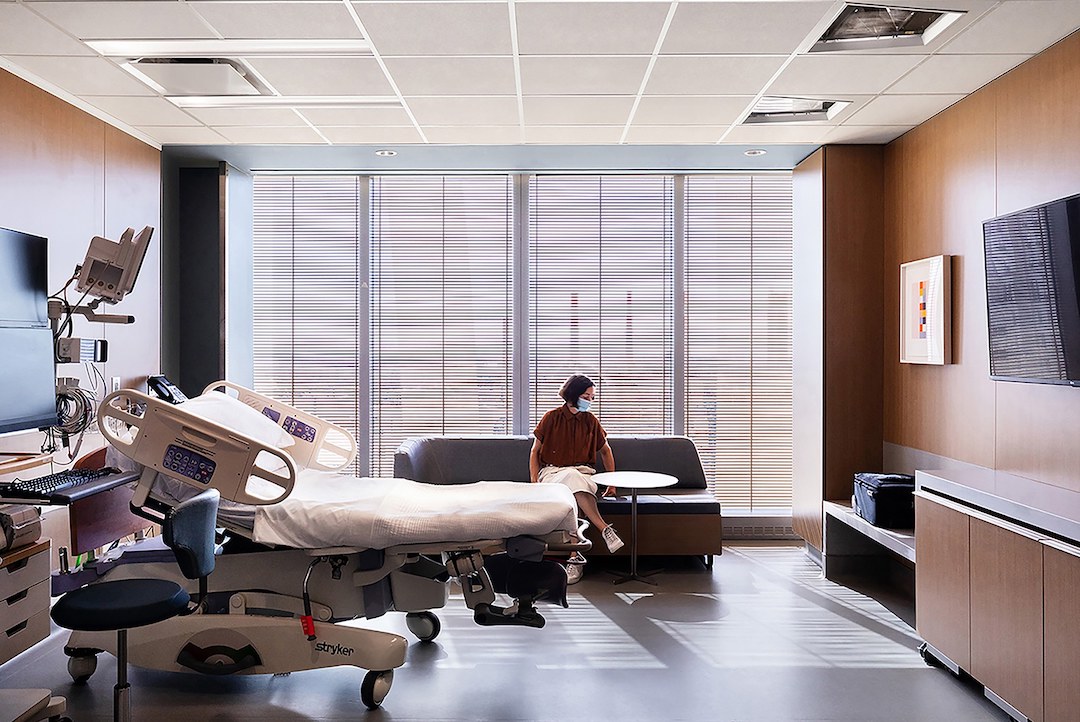
Though it’s standard for patient rooms to include lighting controls and access to outdoor views and daylight, that’s not always the case for staff spaces. Lighting systems can support circadian rhythms by changing color temperature over the course of the day.
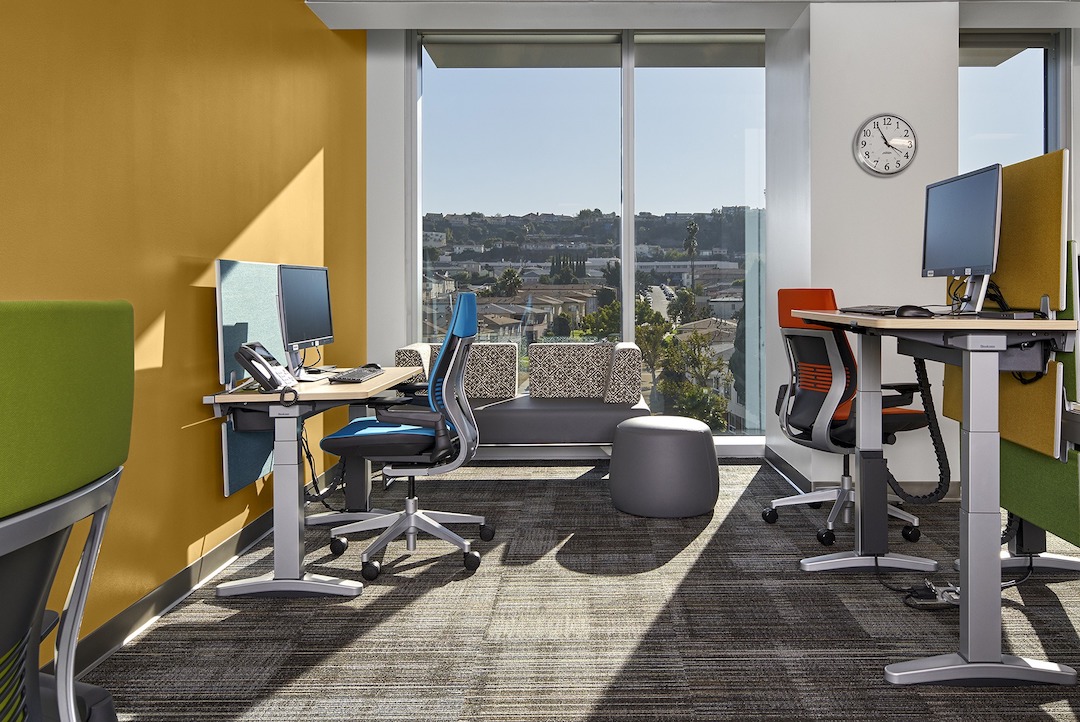
For weary staff, experiencing a burst of light can have the same effect as drinking a cup of coffee. Providing access to dimmable lighting is an especially vital part of maintaining the well-being of healthcare workers who regularly arrive at the hospital before sunrise, leave after sunset or work the night shift.
Respite Rooms
Respite rooms—dedicated spaces for healthcare workers to recharge—can be part of the solutions.
These spaces should be strategically located for easy access and engage people’s senses. Peaceful graphics and lush plants, calming scents and music, comfortable furniture and access to healthy food and drinks all can provide relief.
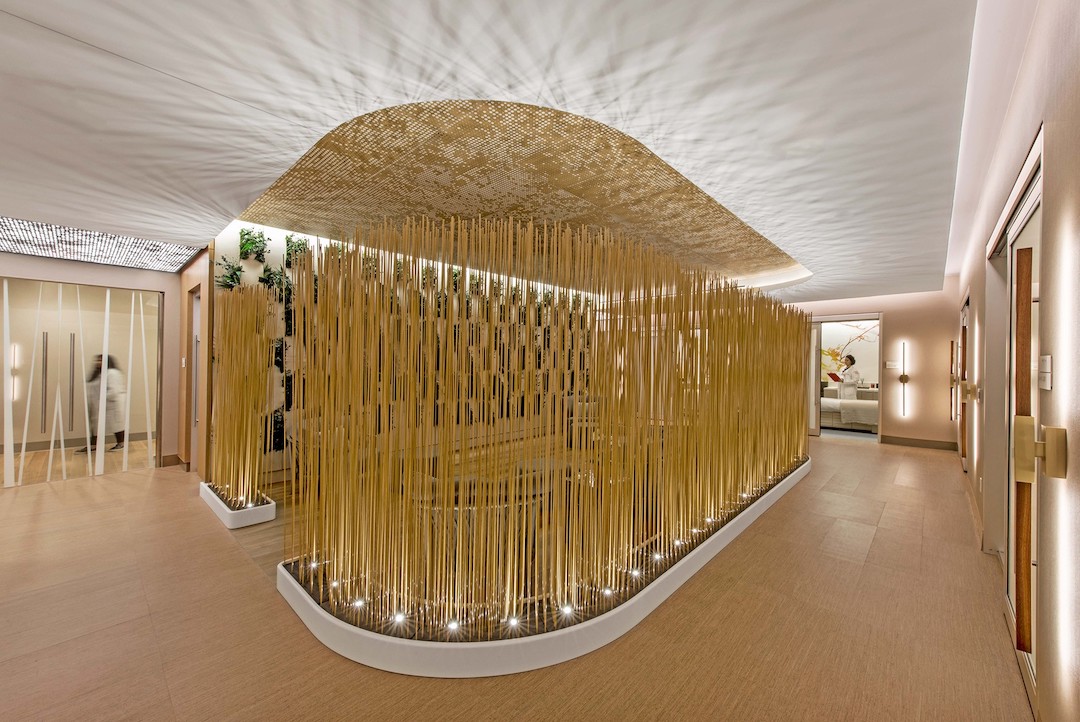
Providing additional quiet spaces for support services like counseling or pastoral care also is important.
Respite and quiet spaces should be acoustically separated from the work environment, giving people a break from the background noises and an opportunity to disconnect from their work.

Supportive Policies and Culture
Respite rooms and outdoor patios are only valuable if institutions encourage their people to use them. While thoughtful design of the built environment can ease some of the mental health issues facing clinicians, it is only one aspect of an organization’s efforts to create a supportive, empathetic culture.
More from Author
HOK | Apr 2, 2024
How university rec centers are evolving to support wellbeing
In a LinkedIn Live, Recreation & Wellbeing’s Sadat Khan and Abby Diehl joined HOK architect Emily Ostertag to discuss the growing trend to design and program rec centers to support mental wellbeing and holistic health.
HOK | Jan 25, 2024
40 Under 40 Class of 2023 winner Kimberly Dowdell inaugurated as AIA 2024 President
The American Institute of Architects (AIA) has announced the inauguration of Kimberly Dowdell, AIA, NOMAC, NCARB, LEED AP BD+C, Principal and Director of Strategic Relationships at HOK and BD+C 40 Under 40 superstar, as its 100th president.
HOK | Jul 13, 2023
Deep green retrofits: Updating old buildings to new sustainability standards
HOK’s David Weatherhead and Atenor’s Eoin Conroy discuss the challenges and opportunities of refurbishing old buildings to meet modern-day sustainability standards.
HOK | Jun 5, 2023
Office design in the era of Gen Z, AI, and the metaverse
HOK workplace and interior design experts Kay Sargent and Tom Polucci share how the hybrid office is evolving in the era of artificial intelligence, Gen Z, and the metaverse.
HOK | May 5, 2023
9 workplace design trends for 2023
HOK Director of WorkPlace Kay Sargent and Director of Interiors Tom Polucci discuss the trends shaping office design in 2023.
HOK | Apr 4, 2023
6 examples of modern college training facilities
HOK discusses the future of college training facilities, with six design takeaways derived from a discussion between Dan Radakovich, Director of Athletics at the University of Miami, and Trevor Bechtold, Director, HOK’s Sports + Recreation + Entertainment practice.
HOK | Feb 23, 2023
Using data to design the sports venue of the future
Former video game developer Abe Stein and HOK's Bill Johnson discuss how to use data to design stadiums and arenas that keep fans engaged and eager to return.
HOK | Jan 23, 2023
How regenerative design is driving AEC industry innovation
HOK's Sean Quinn and Microsoft's JoAnn Garbin discuss the next step of sustainability: regenerative design.
HOK | Nov 23, 2022
7 ways the Inflation Reduction Act will impact the building sector
HOK’s Anica Landreneau and Stephanie Miller and Smart Surfaces Coalition’s Greg Kats reveal multiple ways the IRA will benefit the built environment.
HOK | Jul 19, 2022
All is not lost: 3 ways architects can respond to the Supreme Court’s EPA ruling
The U.S. Supreme Court’s ruling to limit the Environmental Protection Agency’s power to regulate greenhouse gas (GHG) emissions from power plants dealt a significant blow to our ability to fight the climate crisis with federal policy.







